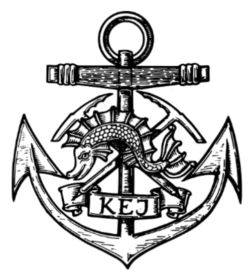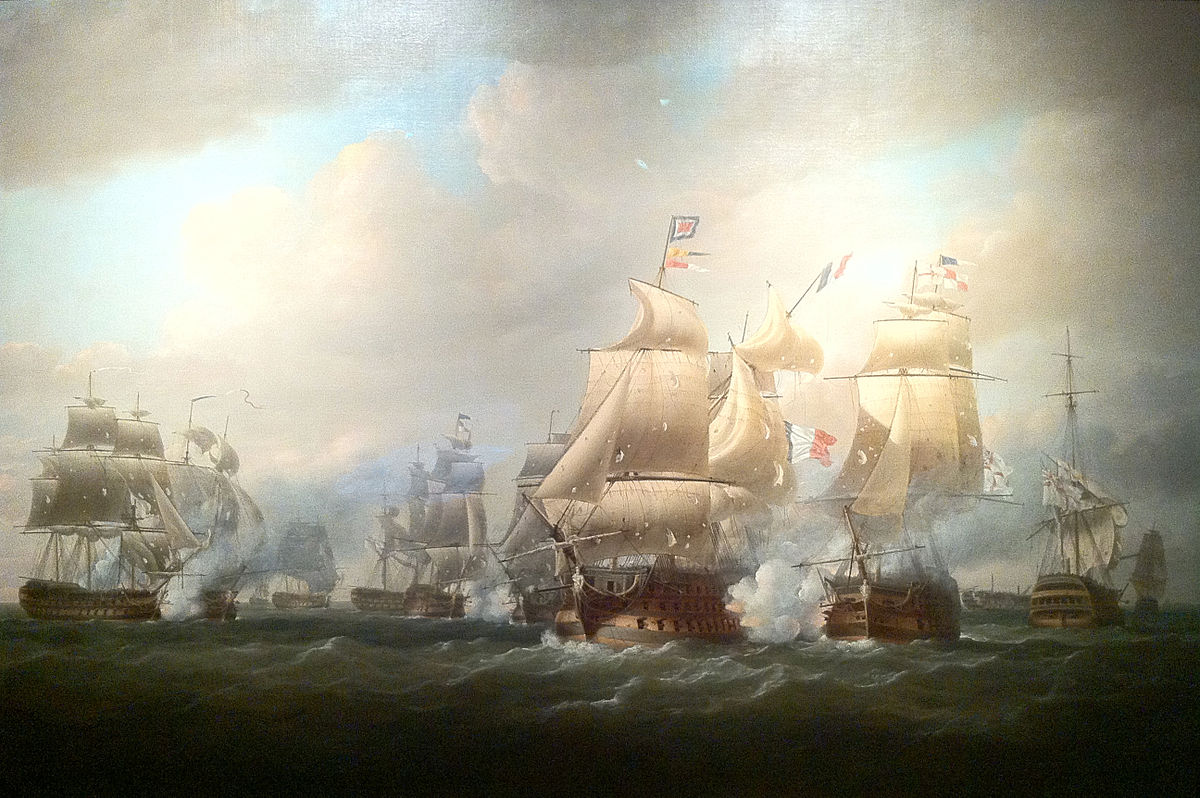Since moving to Hampshire a few years ago, I’ve spent a lot of time in the New Forest. Specifically Buckler’s Hard. It’s my favourite spot to start and finish a walk or a bike ride, is surrounded by beautiful forest and situated right on the Beaulieu River.
It’s also well known for being an old naval shipbuilding village.
As I’ve been there so often recently, and always mention that HMS Agamemnon was built there, and she was known to be Horatio Nelson’s favourite ship, it seemed the right time to finally write something up on her.

Named after the Greek King, Agamemnon, who ruled the city of Mycenae and Argos in the 16th Century BC, she was the first Royal Naval ship to bear the name. She was a 3rd rate, 64 gun Ardent class. The same as Horatio Nelson’s first ship, the Raisonnable.
Her crew fondly renamed her the ‘Eggs and Bacon’ as many didn’t like the more traditional names being used by the Admiralty at the time. This is why the Bellerophon was also known as the ‘Billy Ruffian’ and the Polyphemus, the ‘Polly Infamous’.
Designed in 1761 and built under the watchful eye of Master Builder Henry Adams, using wood from the surrounding New Forest, it took just under 5 years to complete Agamemnon, from the date she was ordered to the date she was launched.
Length on Deck – 160ft 3.5in
Length of Keel – 131ft 8in
Breadth – 44ft 4in
Depth in Hold – 18ft
Complement – 500 Men
Guns – 64
Launching at Buckler’s Hard on the 10th of April 1781, one month after having her Captain, Benjamin Caldwell, appointed, she was towed to Portsmouth to have masts installed, be fitted out and rigged. Of note, on board for her first major deployment off Ushant, successfully intercepting a French expedition bound for the West Indies, was a young Lt, Thomas Masterman Hardy, who later became Nelson’s Flag Captain in HMS Victory.
Honours
- Battle of Ushant, 1781
- Battle of the Saintes, 1782
- Battle of Genoa, 1795
- Battle of the Hyeres Islands, 1795
- Battle of Copenhagen, 1801
- Battle of Cape Finisterre, 1805
- Battle of Trafalgar, 1805
- Battle of San Domingo, 1806
- Battle of Copenhagen, 1807

Important Dates
March 1793: Agamemnon was fitted out for service and after having been commissioned in January with a new commander, Horatio Nelson, she sailed for the Nore. Nelson believed a 64 gunner to be beneath him as his seniority should have entitled him to a 74 gun, but Agamemnon was fast. Her refit gave her a copper sheathed hull, helping with speed and agility. She handled more like a frigate than a battleship, yet her firepower was greater. Nelson quickly took to the crew and they to him.
Nelson headed for Gibraltar to join Hood who was, at the time, commanding the Mediterranean fleet, and had his flag in Victory. Nelson was offered the opportunity to transfer to a 74 gun ship under Hood, but declined as he ‘appeared to sail very fast’ on the Agamemnon. In August, off Toulon, Agamemnon was preparing to assist Hood in support of French Royalists, who were trying to take back the city. Hood needed more men than they could pull together and so sent Nelson for Naples to seek reinforcements from King Ferdinand IV. It was whilst in Naples, that Horatio Nelson met Emma Hamilton for the first time.
April – May 1794: Crew members from Agamemnon, led by Horatio Nelson, used their seamanship skills to raise cannons from the Agamemnon up the cliffs to erect gun batteries. Nelson received a ‘sharp cut in the back’ during the action that followed, but after a 40 day siege they had captured the Corsican town of Bastia. By this point Nelson and Agamemnon had been at sea for a 3 month period. He wrote that his men had not ‘slept dry for many months’, that the ship was so light that she could not hold herself in wind, indicating his lack of stores and provisions.
She was forced to return to Gibraltar for urgent repairs.
June 1794: Agamemnon’s guns and men took part in the 51 day siege of Calvi. It was during this action that Nelson lost the sight in his right eye, when a French shot sent sand and grit flying into his face. The town surrendered on the 10th of August and the inhabitants of Corsica declared themselves to be subjects of King George III.
March 1796: Horatio Nelson promoted to Commodore and raises his broad pendant in Agamemnon, before transferring in June of that year.
29th May 1797: The Mutiny of the Channel Fleet.
Agamemnon, as part of the North Sea squadron was ordered to put to sea. She obeyed the signal, but the crew later mutinied, cutting her cable and refusing to respond to the boatswain’s mate call for hands. They sailed the ship back to Yarmouth Roads before joining the main mutiny at the Nore anchorage in June.
Eventually the mutinous seamen and marines were removed from the ship, a pardon was issued for the remainder of the crew and they returned to duty.
March 1800: Agamemnon was damaged when she ran aground on the the Penmarks Rocks off Falmouth, having to pull in Plymouth for repairs, where she was tied to a shear hulk, in order to stop her sinking.
April 1801: The Battle of Copenhagen. Agamemnon was second in the line but grounded whilst rounding the shoal. She flew a distress signal for the remainder of the battle, and had to be towed off at night, rejoining the fleet 4 days later.
April 1802: Paid off at Chatham, due to the Peace of Amiens.
April 1804: The Peace Treaty was broken and Agamemnon was refitted, had her copper replaced and was brought ‘out of ordinary’, joining the Channel Fleet by September.
21st October 1805: The Battle of Trafalgar
Agamemnon was 7th in line of Nelson’s windward division, between the Orion and the Minotaur. As she was towards the rear, it took her longer to join the action, but she eventually fired her first shots around 1:55pm. She was fired upon by 4 ships, yet still managed to tow the Colossus to safety, before rejoining the action.
After the battle, Agamemnon once more towed the Colussus, but this time to Gibraltar, taking 6 days to make the 55 nm voyage due to damage.
February 1806: The Battle of San Domingo; Agamemnon drove the French flagship Imperial onto the shore and wrecked her.
August – September 1807: The second Battle of Copenhagen. Agamemnon once more ran aground. After breaking free, she formed part of a battery established to command the city. The Danes surrendered on the 7th of September.
February 1808: She sailed to Brazil, anchoring in Maldonado Bay, at the mouth of the River Plate. Another ship, HMS Monarch ran aground, and Agamemnon assisted to break her loose. Agamemnon and Monarch put to sea but were forced to return due to bad weather and damage.

June 1809: Agamemnon anchored in Maldonado Bay to shelter from a storm. Whilst heading in to shore, she hit a shoal, ran aground and the anchor pierced her hull. The crew and stores were all saved, the Captain was court martially but acquitted after discovering it was simply that Agamemnon was in a poor condition. Her wreck was discovered in 1993, along with a number of intact artefacts.
After the wreck of Agamemnon in 1809, the name was used by the Royal Navy for three other ships. A 91 gun second-rate steam ship of the line in 1852, an Ajax class ironclad ship in 1879, and the Lord Nelson-class battleship in 1906.
“I not only like the ship, but I am well appointed in officers and we are manned exceedingly well” – Horatio Nelson on the Agamemnon.

